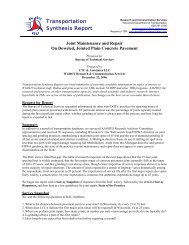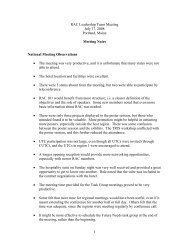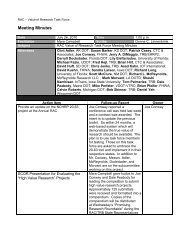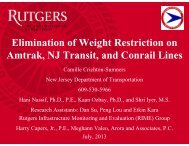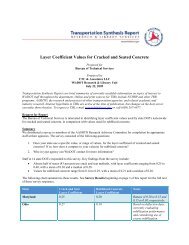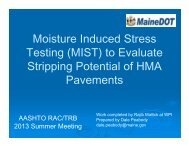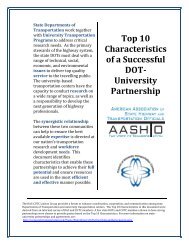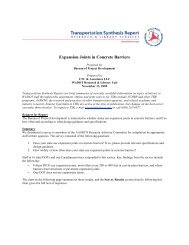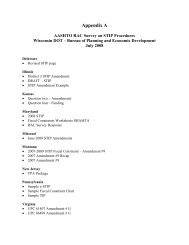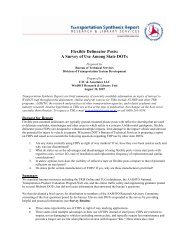PART IV: Summary of Comments - SCOR/RAC
PART IV: Summary of Comments - SCOR/RAC
PART IV: Summary of Comments - SCOR/RAC
You also want an ePaper? Increase the reach of your titles
YUMPU automatically turns print PDFs into web optimized ePapers that Google loves.
<strong>PART</strong> <strong>IV</strong>: <strong>Summary</strong> <strong>of</strong> <strong>Comments</strong>17-May-10Reviewer <strong>Comments</strong> Distribution <strong>of</strong> Ratings■ The collection <strong>of</strong> Bluetooth data is supported however, the boundary between DOT SBIR (proprietary) and this NCHRPwork has to be clarified. It may be better to postpone this project until the commercial product resulted from SBIR is fullyavailable and operationable.■ Work will be almost entirely duplicative <strong>of</strong> projects under way. See attached comments.■ [Rating: 3] Recommend to reduce the scope and focus more on the algorithm development and simulation analysis priorto pushing for field testing <strong>of</strong> the Bluetooth technology developed in the SBIR project). Recommend reducing thefunding, in line with reducing the scope <strong>of</strong> work. Suggested funding: $450,000Research Advisory Committee■ The time frame for research is too long. 18 months would be more appropriate. There are other technologies that can beused. We also believe this technology is several years away and therefore not appropriate to study at this time.■ Providing real time travel information to drivers is already being used in traffic management plans for work zones and isan effective tool and resource for them to make decisions on their route selection.■ The transportation industry would be interested in this type <strong>of</strong> information as a way to cut down on unnecessary timestanding still in traffic back-ups. NCHRP should spearhead the effort creating standards for the industry. Similar effortswith a slightly different focus are taking place applying mobile phone and GPS technology. There is a high probabilitythat this research will be successful because <strong>of</strong> the existing technology that can be used. The anticipated return may berealized now with what is been <strong>of</strong>fered by cell phone service providers.Other■ [Rating: 3]■ [Rating: 2]■ Generally related to ReliabilityItem #68:C-03Development <strong>of</strong> New AASHTO LRFD Tunnel DesignSpecifications(17)(46)NR 0 1 2 3 4 5<strong>SCOR</strong> 1 3 1 5 3 4<strong>RAC</strong> 2 6 8 6 8 12 7Standing Committee on Research■ The research project is very timely and much needed. The current Bridge LRFD Specification is very limited inaddressing tunnel design. This project will add significant depth to the current Specification.■ Currently, Caltrans has very limited design specification references for tunnels. Chapter 12 <strong>of</strong> AASHTO LRFD manual isour only reference. With all the new tunnels that are under design for the High Speed Rail this research will beimportant. The research will minimize our being dependent on foreign guides and references.■ This research is needed for LRFD implementation.■ [Rating: 4] There is a need to develop an LRFD-based tunnel design specification for adoption by AASHTO, as no suchspecifications currently exist, and is appropriate as an NCHRP sponsored project. There is no known similar effortunderway. FHWA has a technical manual on Design and Construction <strong>of</strong> Road Tunnels dated March 2009 which may berelevant in development <strong>of</strong> this LRFD specifications. Also, information from NCHRP project 20-05/Topic 41-05 onSynthesis <strong>of</strong> Design Information on Fires in Road Tunnels, which was initiated in 2009, should be useful in development<strong>of</strong> this specification.Research Advisory Committee■ Will benefit all states.■ This research may not get done within 36 months, due to broad scope <strong>of</strong> work that needs to be done and developing<strong>IV</strong>-47



